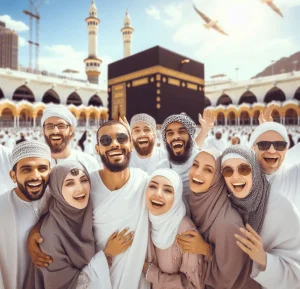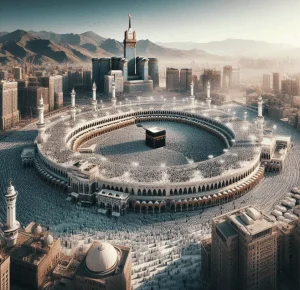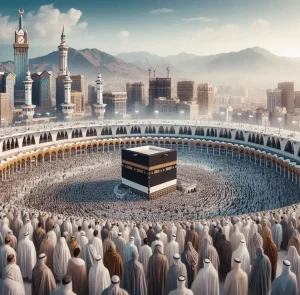A reflection on religious monuments as effectively as their implements in link to their religion and prayer use. This reflection employs Jewish, Islamic, and Christian religions as analyze illustrations of the medieval time.
Welding Sacer as well as Profanus faith is sacred, the sacer cradle, the intertwined truth of religion, and profanes. It is in cathedrals, churches, temples, synagogues, and mosques that we link the sacer and profanus, the home of prayers. Amid the variety of religions and customs, it delivers a collecting of holy sectors, just about every with its very own devoted artwork and architectural composition, and very own apparatus to talk as well as praise the godly. The sectors are truly made with their grooves and tiles contributing to an aesthetic but pious, of which are symbolic of their religion.
The nave currently being the main overall body of the church offered the central stage to the large change which was reserved for the clergy and extended from entry to the chancel, which was created out of the apse of which was flanked by the reduce facet aisles. This architectural style resulted in the growth of the Gothic Christian abbey, Romanesque, and cathedral basilica. The Abbey church of Saint- Denis is regarded as the initially known Gothic framework in which Christians have been capable to worship. When the Hagia Sophia a former orthodox basilica church and later on became an imperial mosque. Prior to hagia Sophia starting to be a mosque, it was a church devoted to God’s wisdom, the logos, and the second man or woman of the holy trinity. This framework from its inception has witnessed some modifications ranging from being the initial church, to second and 3rd church to sooner or later getting to be a mosque, and is at present a museum.
Synagogue is a by-product Hebrew term which usually means household of accumulating. It is a housing for gathered prayer and discussions. The five publications of Moses are practiced in Judaism, the Torah, and the Jewish Bible. They pray while facing Jerusalem and the synagogue structure is oriented to this, for it is the final relationship in between sacer and profanes. Specifically synagogues, these kinds of as the Capernaum Synagogue (4th century B.C.) three doorways can be seen. These three entry factors can be referred to earlier liturgical divisions of the a few ruined courtyards of the Jerusalem temple. In the faith of Judaism, god is nonfigurative, and but this idea is untrue due to the fact the district synagogues have shown artistry. For instance, the Dura-Eurpus synagogue, a properly-preserved Roman garrison amongst the Roman as very well as the Sasanian imperial, one will discover the Torah market. The division of these layouts delivers a candelabrum of 7 branches, the Menorah, a continuous Jewish artwork emblem. The range 7 symbolizes the perfection and completion and represents the commandment of trying to keep the seventh working day holy as mentioned in the Torah. Also observed is the steady narrative, of a chronological storyline versus the wall painting of the daily life of Moses (239 A.D). The display has two photographs of Moses, 1 turning his rod towards the path of the pink sea when the other Moses primary the Israelites via.The total idea of a steady narration is to do with the visual belief of how to exemplify the romantic relationship in between God and humanity. Christians worship in churches, though Jews worship in synagogues, as the conference position in between sacred as effectively as profane, and among profanes and sacer. Within just a synagogue, it is effortless to come across the western wall as it generally has a torah area of interest, which orients people in prayer to Jerusalem.
Architecture of the medieval Jewish synagogue differed from location to spot, absorbing the aesthetics architecture of Christians or Muslims nations exactly where Jews resided. In contrast to the Christian church, whose cruciform style symbolizes Christ’s crucifixion, the synagogue lacked an architectural design that was a symbolic determinant.
Inside the synagogue, particular required architectural factors supplied liturgical applications. Positioned in the center of the synagogue was a raised system on which the Torah scroll was read through, and was also known as the bimah between the Ashkenazic Jews and amongst the Sephardim was called the tebah.
The architectonic significance of the bimah mirrored the significance of Torah in just Jewish rituals. The Torah scrolls were stored in the Holy Ark signifying the Covenant Ark of which was identified as the aron ha-kodesh among the Askenazis and hekhal amid the Sephardic Jews. The positioning of the ark is these types of that individuals struggling with it pray facing toward Jerusalem. Just before the sixth century, the ark was saved in a side room and was out of sight of which was divided by a curtain. In the course of the middle ages, the Holy Ark was fastened at the center of the synagogue’s japanese wall, which faced Jerusalem. The scrolls have been aligned in a standing situation to have the congregation behold them on open of the ark. In turn, the ark, which was richly embellished with lions, was a image of Judah and the tablets of the 10 commandments. As seen, the curtain that was referred to as the parokhet protected the Holy Ark in line with scripture, (Ex. 40:21). In that way, the aron ha-kodesh symbolizes the Jewish tabernacle that was crafted when the Israelites wandered in the desert. The eastern wall should to have a semicircular apse, and the entrance doorway ought to be through the western wall reverse the apse.
The prehistoric priestly obligation of trying to keep a lit candle to melt away eternally right before the Lord (cf. Lev. 24:4) was also transferred to everlasting gentle, which hung before the ark and was saved burning constantly. Everlasting candelabras light-weight had been made of silver, brass, or gold, relying on the communities wealth, and symbolized the enlighten spirituality of the Torah. In addition, the synagogue experienced another fascinating feature, that of the window. In keeping belief of Daniel 6:11, the prophets prayer put had a window. During prayers in the synagogue, the parochet is used to include the Torah ark, which has the Torah scrolls inside of the synagogue. In various synagogues, the parochet is utilized throughout the year and is changed on large holy times.
The dome of the rock, a shrine situated on the temple mount within just Jerusalem’s outdated town is regarded just one of the oldest Islamic architectural works, whose site’s importance originates from spiritual traditions, of which bear wonderful worth for Jews, Christians and Muslims alike. The Christians view the spot of the dome as holy for the reason that of the function the temple played Jesus Christ’s everyday living.
To be oriented towards Mecca for prayers a single would use the mihrab. The mihrab seems to have been a newer model of the Torah market and the apse. Because of to the necessity that a particular person be disconnected from the profane place promptly all over them the necessity for a pray rug was established. Equally, the Torah scrolls of the medieval Ashkenazi world are examine at the bimah or a elevated platform, which is centrally located. All the seats experience the Holy Ark (aron). In addition, the aron is a single of the a lot of successors of the Torah specialized niche, the place the scrolls are stored.
In conclusion, it can be mentioned that the art and architecture of the medieval Jews, Christians, and Muslims were being consistently formed by the exigencies and dogmas of their respective religious beliefs. To different degrees, Christians, Muslims, and Jewish artists and architects adopted the creative, aesthetic, and architectural legacies they bought from historical Roman, Hellenistic, Persian, and other cultures. Furthermore, direct cultural contacts of Jews, Muslims, and Christians manifested on their own within their respective product cultural productions in various ways. Individuals all through the medieval period quickly adopted as perfectly as tailored the inventive procedures of each and every other to make their have. It was not weird for Muslims and Christian monarchs to have artists from different religious communities work for them. All 3 communities used religious artistic symbols in art as properly as architecture for polemical good reasons.






More Stories
Tales of Wonder: Unraveling the Islamic Heritage Mystery
In the Footsteps of Greatness: Journeying Through Islamic Heritage Sites
Echoes of History: Rediscovering Islamic Heritage Around the World